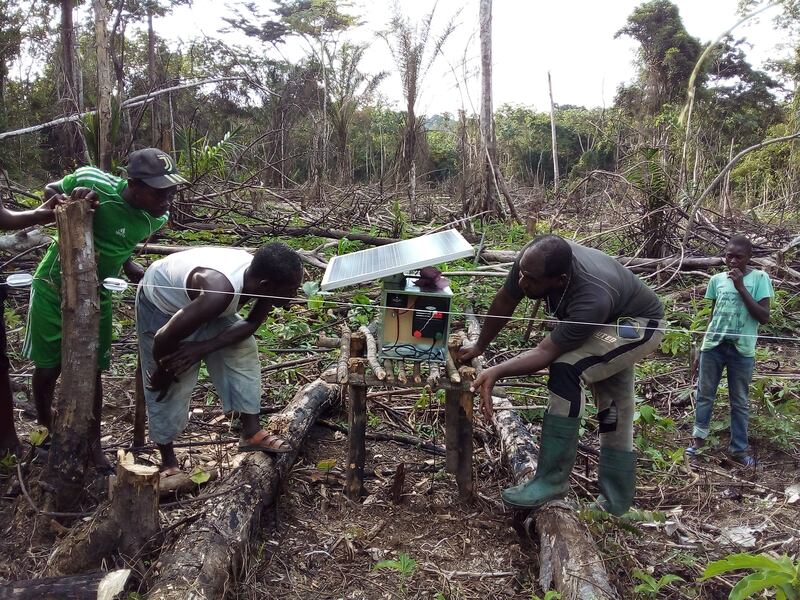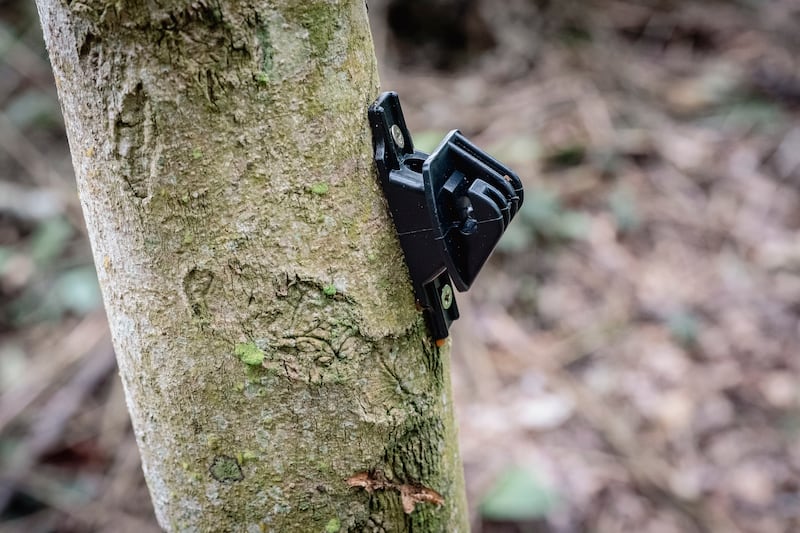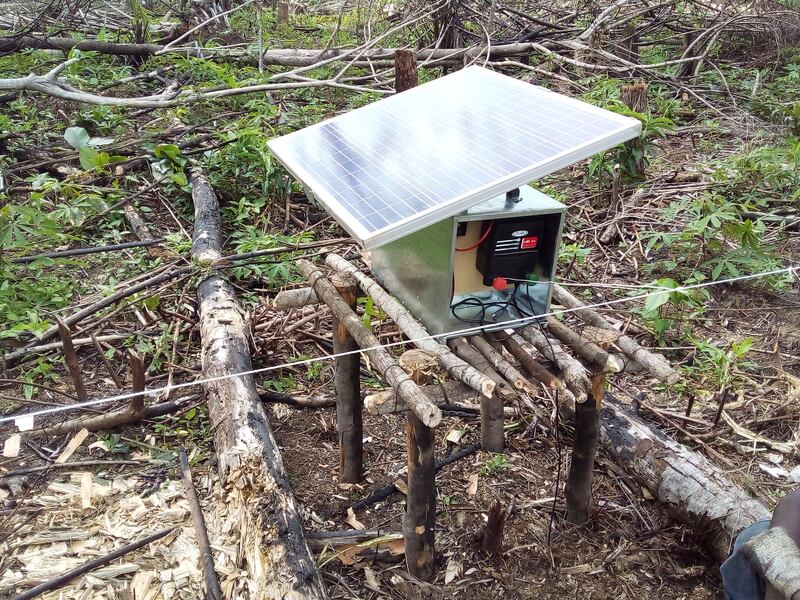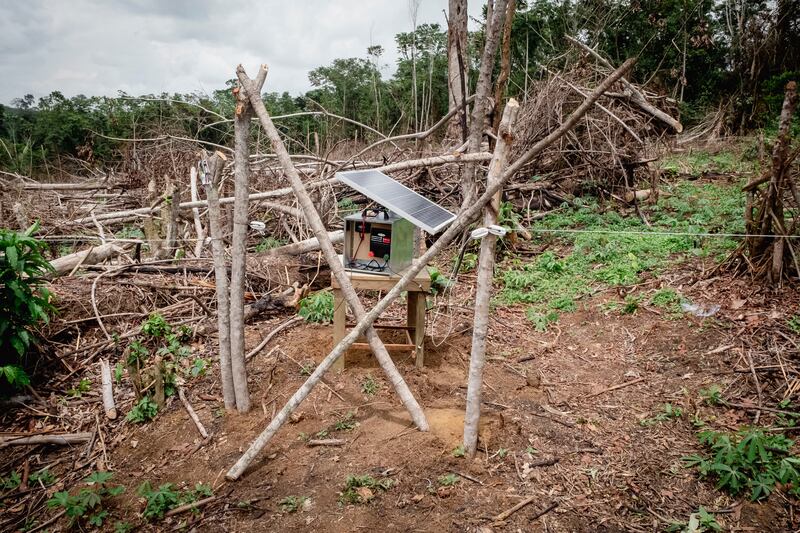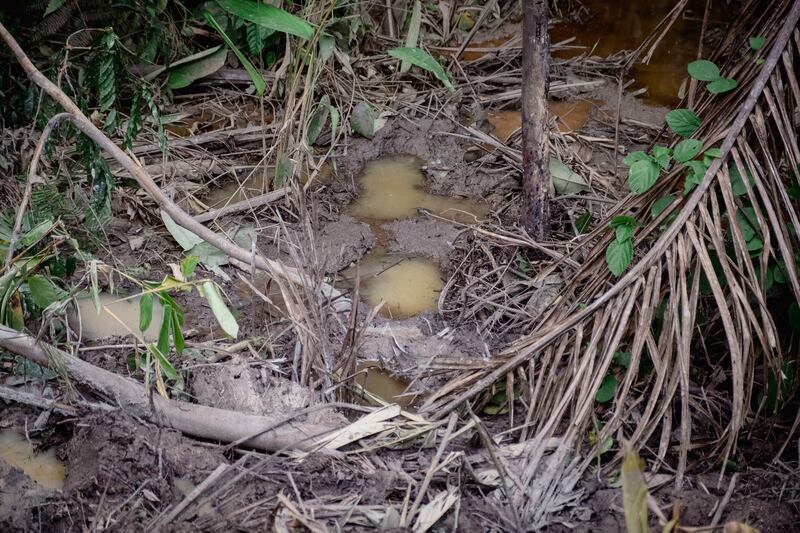Solar-powered electric fences are being installed in Gabon to help farming communities coexist with forest elephants – and Cop28 could provide a platform to help the project kick on.
The fences are expensive, at $3,500 a time, but can preserve one of Africa’s largest populations of forest elephants and allow them to live harmoniously alongside farmers working on fruit orchards.
Gabon is one of the most densely forested nations in the world, with more than 88 per cent of the country draped in rainforest, removing carbon from the atmosphere.
The country is hoping to develop its carbon market to encourage businesses with net-zero ambitions to buy carbon credits to offset emissions produced elsewhere.
It is hoped investment can contribute towards the $10 million required to extend the fences required to protect agriculture from elephants roaming ever closer to farming communities across Gabon.
Dr Max Graham, founder and chief executive of Space for Giants, a wildlife conservation company that has built and maintained 350km of fencing across Kenya, Uganda and Gabon since 2016.
He is seeking new partnerships at the Cop28 summit in Dubai.
“We initially brought a designer fence from Kenya, which was what we call our Rolls-Royce fence, that had been developed in the face of elephant adaptation for around 30 years,” said Dr Graham.
“Elephants in Kenya have been adapting to different designs of fence, so we’ve been in an arms race with them, and the fence ended up looking quite sophisticated.
“We took that design and brought it to Gabon to create a big fence around community farming areas, but the context is very different.
“In Kenya where there's a very high human population, we're fencing elephants in.
“In Gabon, there's a very low human population so we're fencing people in.”
Conservation projects
Carbon credits, or carbon offsets, are permits allowing companies to compensate for their greenhouse gas emissions. Proceeds from credit sales are then used to finance climate action projects, such as protecting conservation areas or rewilding regions destroyed by human activity.
“These electrified fences need to be very high voltage to deter elephants, so you want to get the voltage above 7,000 volts, but with a low current,” said Dr Graham, who added the fences are 90 per cent effective.
“This means you can get a nasty shock but it won't kill you. That is key, as it's effective at keeping elephants out,” he added.
“We are working on a farm-by-farm basis, which are anything from two to 20 hectares in size.
“Oil companies have so far invested around $2.5 million in the project, so our expectation is that the balance could be raised from other oil companies or corporations.”
The Voluntary Carbon Market is currently valued at around $2 billion.
Average prices for nature-based carbon credits, at 1 tonne of avoided or removed carbon dioxide, range between $5–15.
Those prices are expected to soar in the coming years, with increased interest in net zero pledges around the world.
Qualifying criteria
Carbon projects ripe for investment are scattered across East Africa but must fulfil certain criteria to qualify.
They must be large protected areas of 1,000km squared or larger, and be in a state of degradation with high conservation value.
There must also be political support for such initiatives, and the potential for co-management from governments.
One area primarily suited for investment is the Karamoja grasslands in north-east Uganda, home to 525 bird species and 163 mammals, including Rothschild’s giraffe and cheetah populations.
The area has been ravaged by overgrazing, fire, agricultural encroachment and illegal hunting.
Degradation across 215,300 hectares could be rehabilitated and provide 600,000 carbon credits a year, Space for Giants said.
In Gabon, it is hoped solar-powered fencing technology can develop to become mobile, so fences can be packed into a rucksack and carried to where they are needed
Omer Ntougou Ndoutoume, head of the Gabon wildlife service (ANPN), said the issue of human-wildlife conflict is being challenged by climate change and is a government priority.
“Elephants move into these populated areas to get the fruit from the trees,” he said.
“The further they go, the closer they get to the population, which creates an impact for their food security for the local people.
“This is something that we are tackling and taking very seriously with the government.
“Initially we went for big projects with electrical fences, which cost a lot of money.
“Now we are having a more individual approach, with grouping fences where people can actually do it for themselves, so it's easier to maintain and the cost is less.”
